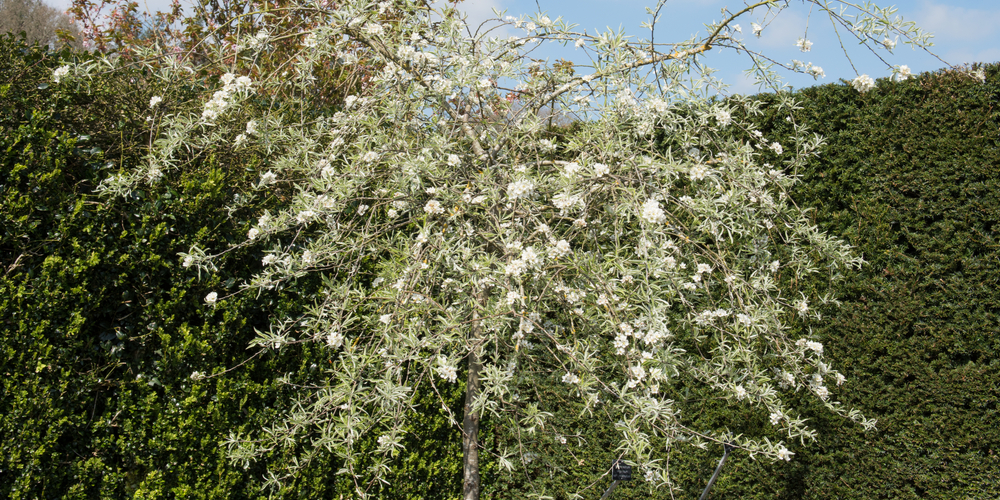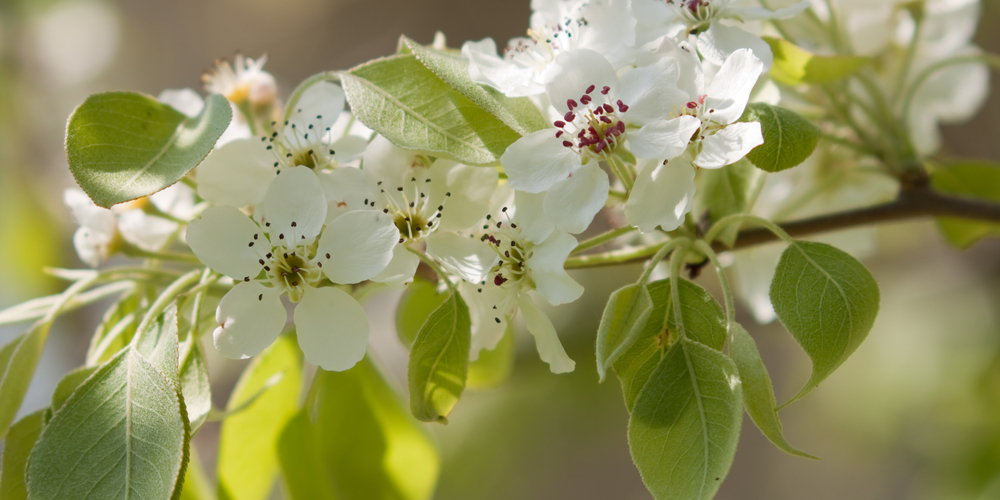The weeping silver pear tree makes a great ornamental tree in your garden. If you’re a fan of willow trees but don’t want a big tree in your yard, then the weeping silver pear tree could be an alternative option. This tree can only grow up to 20 feet and spread up to 14 feet.
Quick Answer:
The best time to prune a weeping silver pear tree is in winter when there are no leaves, flowers, or fruits that can get in your way.
In the spring, the weeping silver pear tree will add beauty to your garden because of its dramatic weeping branches, fully covered with silvery-gray leaves and beautiful creamy white flowers. Although this pear tree will grow even with minimal care, trimming is needed every year, especially if the branches are starting to touch the ground.
Do you need help pruning your weeping silver pear tree? Then this article can be your guide.
Why should you prune a weeping silver pear tree?
The slender weeping branches are the major asset of the weeping silver pear tree. Along with the gray leaves and white flowers, these are the three things that make this specific pear tree uniquely beautiful. Why then do you have to trim the branches if that is what makes the weeping silver pear tree attractive?
Not only the weeping silver pear tree but pear trees and other flowering trees, in general, should be pruned because doing so helps the plant grow healthy and stronger. Here are the specific reasons why you should prune your weeping silver pear tree once a year.
- You can shape the plant according to how you want it to look.
- You can remove branches that offer no benefit and only harm to the tree.
- It deters pests and other animal infestations that could possibly kill the tree.
- It encourages abundant flower production and healthy fruit production.
- It stimulates the plant to put out healthy new growth.
- It gives the tree a clean and polished look.
When to prune a weeping silver pear tree
The flowers and leaves of the weeping silver pear tree will start to appear in mid-spring or April. The tree also produces small green fruits in the summer, which are inedible.
Since the weeping silver pear tree is a deciduous plant, the green leaves will fall off in the autumn, and only the branches will be left in the winter. When should now be the right time to prune a weeping silver pear tree? As with other flowering trees and shrubs, the best time to prune is when they are dormant.
The best time to prune a weeping silver pear tree is in winter when there are no leaves, flowers, or fruits that can get in your way. Since only the bare branches will be left, you can easily spot which branches are touching each other, so that you can easily cut the other one.
Also, with no leaves obstructing your vision, you can easily shape the tree according to how you want it to look. Also, when you prune in winter, there will be no leaves and flowers falling on the ground that you have to clean off.
How to prune a weeping silver pear tree?
Pruning a weeping silver pear tree in the winter is an easy task. Make sure that you have the right tools with you before you tackle the dead and harmful branches, like sharp pruning shears. Always be careful with the tools since you are handling sharp blades here. The basic pruning principles include when to prune and where to cut. Since you already know why to prune and when to prune, the only thing you need to know is where to cut. Always start at the top and trim in such a way that you maintain the symmetrical shape of the weeping silver pear tree. Cut only 10% to 20% of the weeping silver pear tree each year.
1. Trim all upward-facing shoots.
2. Get rid of any dead, unhealthy, or old branches.
3. You also need to trim the branches that are touching each other.
4. If the upper surface of the weeping silver pear tree looks thick, then you need to remove some branches there so that air and light can pass through to the lower branches.
5. Remove any branches that are in contact with the ground. The distance between the hanging branches and the ground should be at least 1 foot.
Weeping silver pear tree: Conclusion
The weeping silver pear tree is a great ornamental tree if you’re looking for another beautiful and low-maintenance tree for your yard or garden. This pear tree only needs trimming in the winter to promote growth and abundant flowers in the spring.
Pruning can also help the weeping silver pear tree maintain its beautiful weeping branches. Always remember the basic principles of pruning, which are knowing when to prune, knowing where to cut, removing problematic branches, thinning out dense growth, and pruning regularly. Apply these principles to your weeping tree and, for sure, it will grow healthy and beautiful flowers in the spring.
Related Article: Flowering Trees Zone 7 and 7b


Is pollarding an effective technique to use on an overgrown weeping pear? The tree in question has not been pruned for at least 5 years. It has a a number of branches aiming straight up at the top, and the lower circumference has greatly out grown it’s intended space.